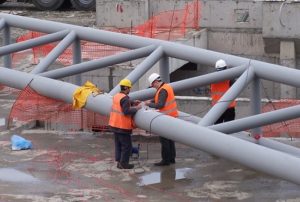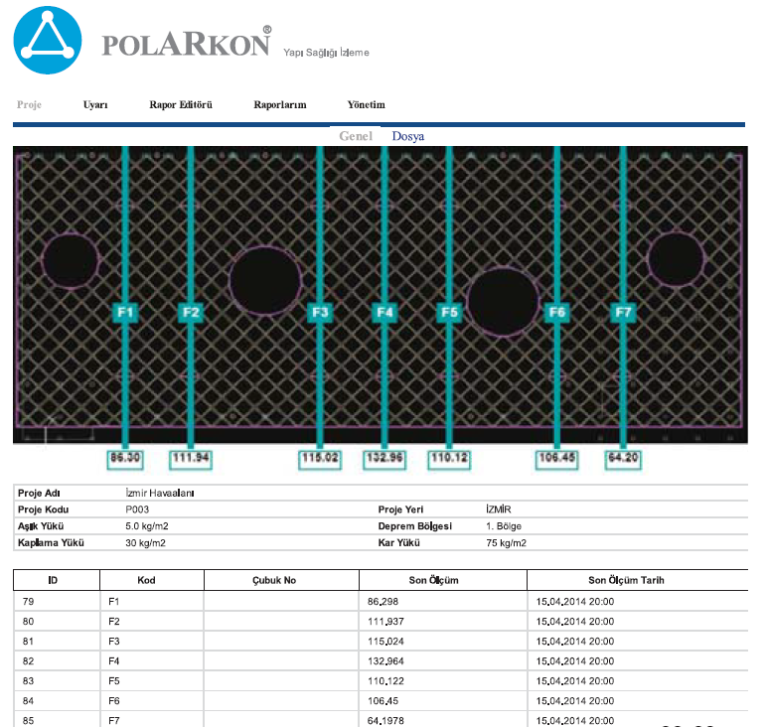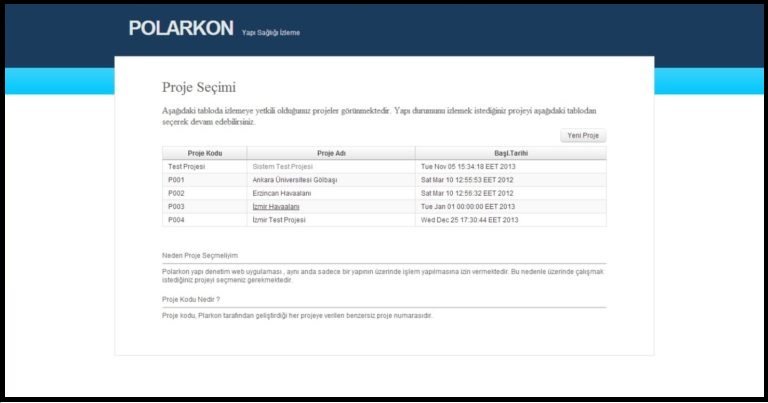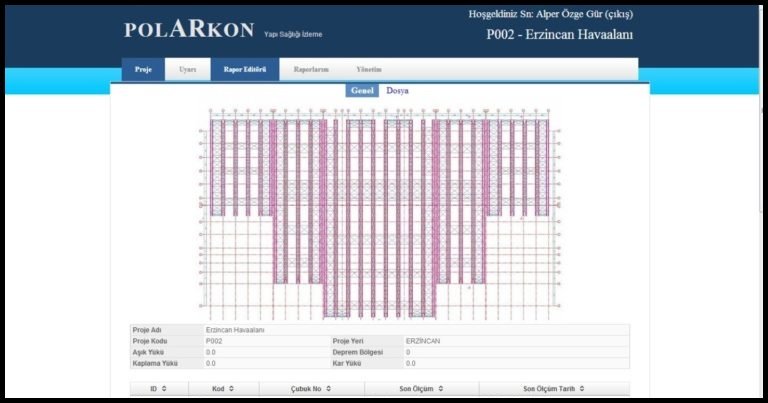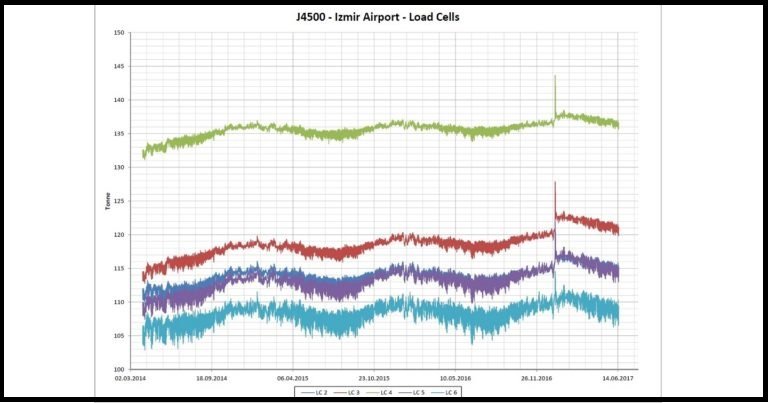Polarkon Structural Health Monitoring System (PYSIS)
It is a scientific control method applied, to conclude whether steel or reinforced concrete structures are built in accordance with their technique existing building behavior is followed by collecting numerical data.
Why PYSIS is needed
Computer, software and communication technologies are highly developed and rapidly developing, every day.
Dream of architects are pushing boundaries, for beyon the classical conseptions with each day; taller buildings, more irregular shaped structures and bridges with Longer span are record-breaking, competing works with each other.
In terms of design, clients demands are met by the software required for Structural Analysis is highly advanced and PC versions are also developed made easy to use by all engineers and technicians effectively.
Production technologies can also keep up with these challenges. Expensive and very special production technologies required for formerly extremely difficult and expensive manufacturing has now turned into conventional technologies owing to be equipped with computer aided machine tools.
At this point, However, the current control mechanisms for checking and inspecting the conformity of buildings in our country and in the world are insufficient.
Current control mechanisms lag behind this rapid development and can sometimes return to a conventional state with an analog approache for the structure.
- Material Control and testing before manufacturing
- In situ dimensional controls, application controls and control in manufacturing process
- Physical examination is limited to visual inspection at the end of work.
- In line with all these developments, it has become necessary to develop similar advance technologies in control methods.
CURRENT CONTROL METHODS
MATERIAL CONTROLS
- Destructive tests (tensile and pressure tests),
- Chemical Tests
- Non-destructive inspection techniques
- Checking of manufacturer quality certificates etc..
CONTROL OF CONSTRUCTION TECHNIQUES
- Inspection of assembly technique
- Check that the bolts are fully tightened
- Control of resources
POST-CONSTRUCTION CONTROLS
- Physical Examination
- Visual Control
Physical control methods are no longer sufficient for inspection of superstructures those are computer aided designed and manufactured.
The PYSIS project (POLARKON structural health monitoring system) results may be needed at this point.
"STRUCTURE INSPECTION IS SECURED WITH PYSIS. YOU WILL KNOW THAT YOUR STRUCTURE IS PROBLEM FREE OR IT HAS PROBLEMS IF EXISTS ANY”
Test and calibration studies were carried out using POLARKON, DSI and METU laboratories, especially for extremely precise measurement of stress values of steel elements and displacement values of structures. In this period, analog / digital converter units specially designed for the project were produced by establishing solution partnerships with the companies active in Technocity. Parallel to these studies a web-based software has been developed by POLARKON which evaluates and reports all data via automation
The developed system in question, has been made a subject of an industrial thesis (SAN-TEZ) since 2009 to be deployed in real applications and by monitoring one of the main beams and trusses of the Erzincan Airport Terminal Building in which POLARKON is the main steel contractor.
The relevant application has been the topic of the related thesis. Under this application 16 strain gauges and 1 accelerometer is mounted on steel structure and by creating a main control and transmission module to the system where the data transferred to the checkpoint with the installed system, the effects under which the trusses subject to various Load conditions were observed even at the moment of lifting.
POLARKON is able to determine the real situation after installation regarding the structural health condition that can be followed on steel structures where it is mounted, by following the building behavior,necessary improvement can be provided and healty structure life is extended duration the service lifetime.PYSIS also can make reports with the desired frequency and quality. In this way, it is aimed to safeguard actual building health.
What is PYSIS-Polarkon Structural Health Monitoring System?
POLARKON has developed a unique technology that can measure the structural health of buildings built by itself whose significance coefficients are high and critical, by integrating digital sensors and mobile communication technologies which are rapidly developing and getting much simpler today, with the help of original software developed.
Within the scope of the system in question, POLARKON,provides transmission of all data for monitoring the structural health of steel structures (Strain, stress, displacement values - displacements, rotations, support reactions, external loads acting on the structure, wind, snow loads, etc.)
- Instantaneous numeric values
- In real-time
- Continuously
Instantaneous numeric values, in real time, Continuosly conveys the data processing center installed in the main office make use of mobile technologies,
by creating an infrastructure for long-term data collection and a smart web-based data management system, followed by main office.
Data collected within the scope of POLARKON STRUCTURAL HEALTH MONITORING SYSTEM (PYSIS) in the main office data processing center, is evaluated with theoretical calculation values by constantly running software and it is questioned again instantly and in real time whether there is a problem related to building functioning in security or not.
PYSIS is an extremely flexible software.
User requested reports can be sent periodically as preferred by the user via web.
Reports: As numeric values in an Excel form or in graphic form can be delivered daily, weekly, monthly and periodic (Quarterly, semi annualy and annually) by mail, SMS or fax.
The user, depending on his/her request , can access all data , define his/her Reports, program the type and frequency of reporting, and create his/her own system for obtaining reports based on Continuous Automation.
Warning system: in case of approaching user-defined structure safety thresholds for some reason in the structure , it is designed to give instant alerts so that the necessary investigations and precautions can be taken. These alerts can also be send via SMS, e-mail and fax.
Benefits And Consequences Of The System
A steel structure equipped with PYSIS has extremely important privileges listed below.
Specifically in steel structures, error detection after installation is extremely difficult or even impossible. Sum of all problems that may occur due to manufacturing and assembly errors such as tightening Bolts in full, proper welding according to the technique, or assembly tolerances observed by comparing the data obtained with the theoretical values after the assembly are to be checked with outmost care. It is possible to dedect whether it has a structural problem with regard to post-assembly. In short, PYSIS is highly scientific and objective method of acceptance of a work whether it is done in accordance with the technique and as required by the project specifications of the work.
After mounting, extremely definite judgments can be made regarding structural health by comparing the data obtained in successive years under similar conditions and loads, considering that the building will be monitored continuously and for a long time. PYSIS is a system that can informe problems in building immediately from the beginning of possible problems arise. In this state, PYSİS is a system that secures both the material and users safety of structure.
In structures equipped with PYSIS, after earthquake, storm, extrem heat change etc.. sudden effects, it will be possible to obtain very clear information about whether there is permanent damage to the structure or at level that the health of the structure affected is within acceptable limits.
Using the data obtained and recorded with PYSIS, valuable data will be provided to support R & D studies in many areas that one can imagines, from determining the life of the structure to developing new support types.

